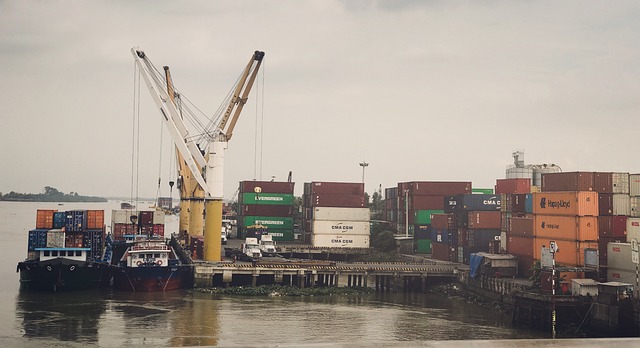How Free Trade Agreements Are Boosting Vietnam’s Economy
Talking about trade in 2025 is a heated topic. Both export and import tariffs keep increasing with no sign of stopping. But there’s a silver lining. In hard times, countries are building stronger connections to protect each other’s interests. One of the ways they respond to tariffs is through Free Trade Agreements (FTAs). Vietnam has built itself into a formidable player in the global economy, in no small part thanks to FTAs. As a growing hub for manufacturing, exports, and foreign direct investment, Vietnam’s FTA network is positively reshaping its economic landscape.
One of the country’s popular FTAs that has received global attention was the European Union (EU)-Vietnam Free Trade Agreement. Geert Bourgeois, former member of the European Parliament, said about the agreement: “The trade committee is giving a positive signal to the ASEAN region and the rest of the world at a time when trade tensions are rising. Besides its geopolitical and economic importance, I am convinced that this agreement will accelerate the reform process within Vietnam. The ratification will strengthen further progress on labour and environmental standards and the respect for human rights.”
Let’s delve into each of Vietnam’s trade agreements, how they benefit, and the sectors that see the most long-lasting impact.
The Top 4 largest Free Trade Agreements in Vietnam
• The Regional Comprehensive Economic Partnership (RCEP)
Effective from: 2022
Partners: ASEAN Member States, Australia, China, Japan, New Zealand, and South Korea
• The EU-Vietnam Free Trade Agreement (EVFTA)
Effective from: 2020
Partners: All 27 countries in the European Union
• The Comprehensive and Progressive Agreement for Trans-Pacific Partnership (CPTPP)
Effective from: 2019
Partners: Australia, Canada, Japan, Mexico, New Zealand, Peru, Singapore, Vietnam, and pending others
• ASEAN Free Trade Area (AFTA)
Effective from: 1993
Partners: All 10 countries in ASEAN
These agreements reduce or eliminate tariffs, simplify customs procedures, and encourage foreign investments, making them key factors driving Vietnam’s rise as a preferred business location in Asia.
Key Benefits of Vietnam’s Free Trade Agreements
1. Accelerated Export Growth
FTAs have significantly lowered tariff barriers, allowing Vietnamese goods to compete more effectively in international markets. For example, under the EVFTA, 99% of tariffs on Vietnamese exports to the EU will eventually be eliminated, giving Vietnamese products a competitive edge in one of the world’s largest markets.
Impact: Companies sourcing from Vietnam can access higher-quality goods, including but not limited to electronics, textiles, and furniture. Each sector is at a more economical price due to reduced export costs.
2. Attracting Foreign Direct Investment (FDI)
Vietnam’s FTA network, along with its stable political environment and strategic location, has made it a magnet for FDI. Multinational manufacturers are shifting operations to Vietnam to benefit from tariff exemptions and diversified supply chains.
Impact: For logistics firms, industrial park developers, and service providers, the influx of FDI presents new partnership and infrastructure development opportunities.
3. Diversification of Trade Partners
With access to markets in Europe, North America, and across Asia, Vietnam has diversified its trade partnerships. This reduces dependency on any single market and enhances economic resilience.
Impact: Businesses that rely on global supply chains benefit from Vietnam’s diversified trade network, reducing risk and increasing supply chain flexibility.
4. Improved Regulatory and Business Environment
To meet FTA obligations, Vietnam has undertaken major reforms in areas like labor laws, IP protection, and transparency. These changes are creating a more structured and transparent business environment.
Impact: Companies doing business in or with Vietnam can expect improved legal protections, greater ease of doing business, and stronger compliance standards.
What Sectors See the Biggest Boost from Vietnam’s Free Trade Agreements?
Several industries in Vietnam are benefiting more from FTAs than most, including:
Textiles and Garments: As the world’s second-largest apparel exporter after China, reduced tariffs are fueling additional growth in this sector.
Electronics, Information, and Communications Technology: The country is fast becoming a key link in the global electronics supply chain, thanks largely to the government’s “Make in Vietnam” initiative promoting self-reliance.
Agriculture and Seafood: With FTAs opening access to high-demand markets for specialty products, producers are also capitalizing on antibiotic-free fish farming as part of the nation’s efforts to combat antimicrobial resistance.
• Automotive and Machinery: Investment from Japan, Korea, and EU nations is ramping up production capacity in Vietnam. The market is being driven by rising middle-class incomes and increased private car ownership, with future growth projected through 2035.
Takeaways
Whether you’re diversifying supply chains, investing in manufacturing, or providing services, Vietnam’s growing network of FTAs represents a strategic opportunity for foreign companies. Vietnam’s proactive trade strategy is transforming it into a competitive and attractive destination for global businesses planning to conduct B2B activities. As FTAs continue to strengthen and expand, now is the time for companies to harness Vietnam’s high-growth market.
To stay compliant with evolving trade rules, you should leverage professional consultants or legal advisors familiar with Vietnam’s FTA landscape. Through Double M, our years of market entry expertise will allow you smooth access to Vietnam’s market, with services such as import handling, food and beverage regulatory support, along with many others. Contact us now with your specific inquiries to start your journey into Vietnam’s vast potential.
